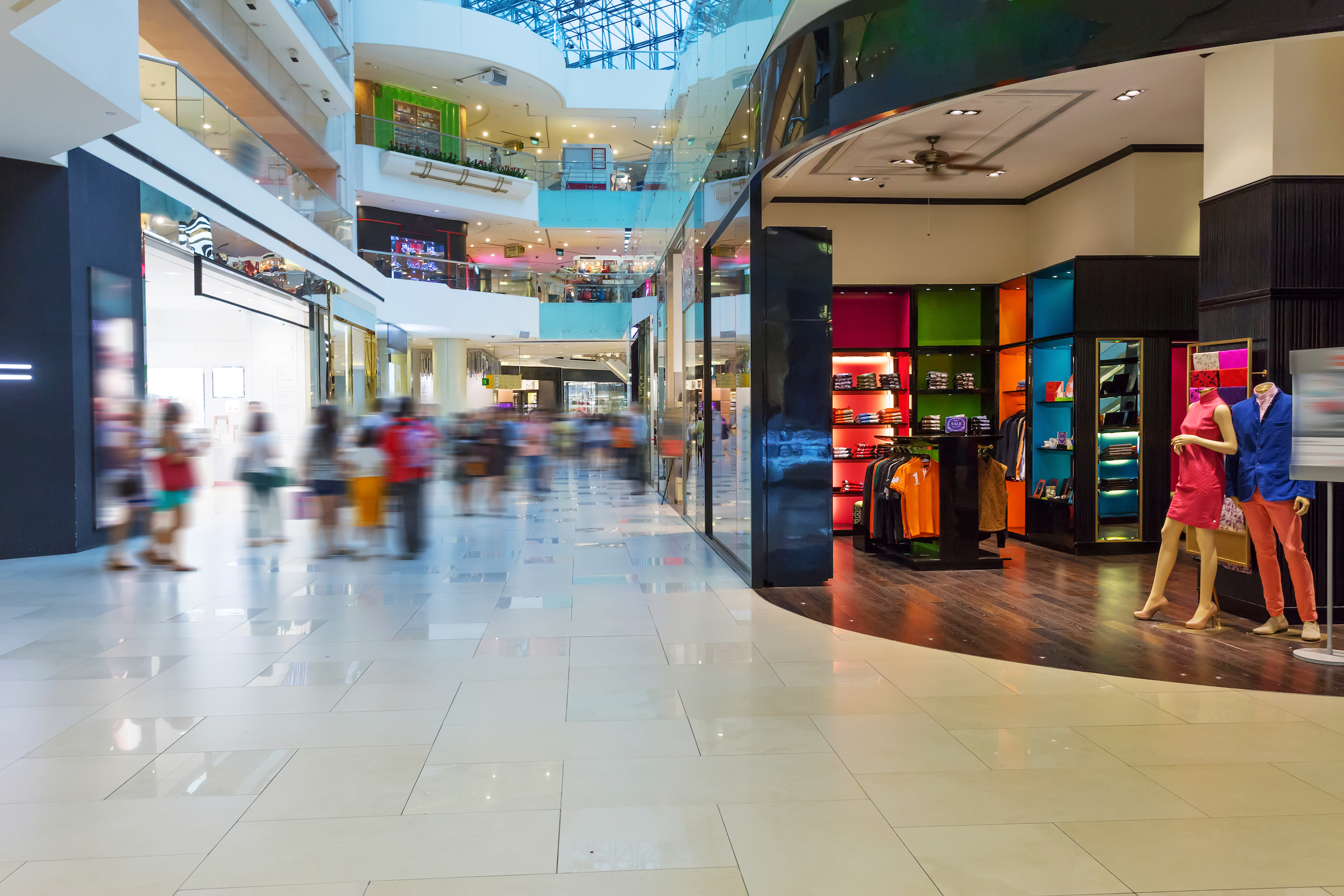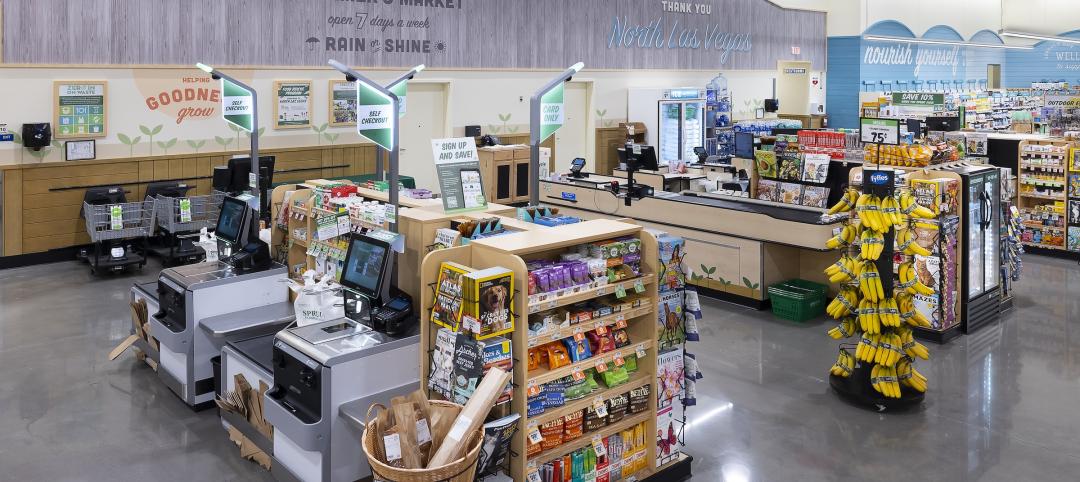It’s no secret that malls across the country are in trouble. A storm of new technologies, societal shifts in consumer wants and expectations, and moments of disruption have threatened the retail destinations that have come to be emblematic of suburban American culture. In all the turbulence, one thing has become clear: malls that do not evolve will disappear. At their scale, malls can absorb the failures of new ideas as they come and go. The mall’s potential to pioneer new ideas and innovation has set the category apart and defined its success.
There have been three critical aspects of mall design that, through evolution, have proven to be instrumental in the staying power of a retail destination: parking, planning, and customer experience. Viewing these three through the lenses of past and present, we can predict what a thriving mall of the future may look like.
Parking concepts for the mall of the future
Nowhere has the concept of “suburban sprawl” been exemplified better than at the malls of the past. These dinosaurs sat amid a sea of parking fields with thousands of spaces. In more urban areas, floor upon floor of helical parking structures sat adjacent to retail destinations. For much of the mall’s history, up until very recently, its viability has been beholden to whether or not it can be adequately parked.
In the present, with the advent of ridesharing services such as Uber and Lyft and a resurgence of public transportation, parking’s influence has started to wane. Simultaneously, technology has been implemented to optimize the parking experience. Many retail destinations feature license plate readers, which can give lost shoppers step-by-step directions back to their vehicles. The goal is to minimize any potential friction a customer may experience upon arrival and exit.
In the mall of the future, the emphasis on parking will take the back burner due to autonomation and its efficiencies. Autonomous cars will remove the unpleasantness of the parking experience from the customer journey, effectively providing personalized car service. Without having to make room for driver and passengers to enter and exit the vehicle, self-driving cars will be able to park within inches of each other and in tandem, massively reducing parking requirements, in turn reducing the parking footprint and cost of construction. Meandering through garages looking for parking and waiting in long queues to exit will be a thing of the past.
Mall planning
The process of mall planning is also evolving. The “dumbbell” layout – department store anchored boxes strung together with inward-facing in-line retail shops – was ubiquitous in the malls of the past. Similarly, nearly every mall featured a centrally located quick-service food court and an entertainment component, typically a movie theater. While this archetype still exists throughout the country today, most are dying relics of a bygone era.
Many of today’s malls still feature the dumbbell layout of the past. However, in many cases, the anchors sit empty and present a quandary to developers. Malls thriving today have found that the key to survival is to blend uses and feature regionally specific offerings. For instance, the large footprint of an empty anchor is easily repurposed as office space or a boutique food destination.
The mall of the future will be planned by harnessing the power of artificial intelligence. AI systems will analyze massive amounts of consumer data to diagnose and delegate the optimal use of space in a center to inform the districting and leasing of tenants. This extends beyond retail, allowing for a truly mixed-use space that blends seamlessly into the city’s fabric. AI will also make the mall of the future more sustainable, using data to allocate energy consumption in the most efficient way possible.
From a construction perspective, the flexibility of modular tenant spaces will allow for relocation and reconfiguration in real time. The efficiencies of a plug-and-play space will also minimize the presence of construction during peak hours to have little to no negative impact on the tenant and customer experiences.
Customer experience at the mall of the future
Since their ascension to popularity in the 1950s, malls have united American communities, serving as the U.S. equivalent of the European town center. Impressive multi-level central atriums featuring attractive plants, comfortable seating, and climate control were ideal social environments. They were extending consumer dwell times and benefitting retailers. The customer journey began upon arrival at the previously mentioned sea of parking. Parking was arranged to make establishing a visual connection to the building entrances easy. Once inside, static directories strategically placed throughout the mall apprised shoppers of the offerings and their locations.
Today, the digital era has allowed for significant leaps of innovation, blurring the boundary between the physical and digital environments. Today’s forward-thinking operators aspire to transform the perception of a “mall” from something that has always been routine and predictable to an experience that is culturally rich, unique, and memorable. A neutral approach to design that is timeless and flexible creates a sustainable evolutionary path that resonates with consumers through authenticity. Smartphones and social media allow the digital to permeate the physical environment, making strong Wi-Fi and a cohesive suite of digital services a must to attract consumers and support tenant offerings such as click-and-collect and personalized shopping services.
These trends will continue to advance into the future. Malls will integrate with a personalized concierge service that starts the shopping experience when shoppers leave their homes. Once they arrive at the mall, their autonomous vehicle will drop them off. The digital concierge service will create a custom one-of-a-kind shopping experience based on personal and aggregate data. Wayfinding will be as simple as following the digital concierge’s instructions as it leads the shopper through the mall on the most efficient route based on their wants, need, and habits. When shoppers are ready to leave, their car will be waiting for them, having parked and retrieved itself. The digital concierge will store the data from this trip and use it to make the next trip even better.
Conclusion
While the mall of the future may not take any one form or may not even be recognizable to us today, one thing is sure: Those who take advantage of rapidly advancing technology to drastically reduce or eliminate customer pain points and enhance the efficiency of their operations through AI will survive. As our cities densify with housing and other uses, malls of the future will blend seamlessly into the city fabric.
The flexibility to reconfigure tenants and their spaces based on use and demand will revolutionize leasing and allow for a more sustainable approach to architecture. The customer experience in the malls of the future will remove all friction to provide a more focused journey with which shoppers can engage. Ultimately, operators who can innovate in the areas of parking, planning, and customer experience will see their malls thrive.
More from Author
Nadel Architecture + Planning | Sep 17, 2024
Thinking outside the big box (store)
For over a decade now, the talk of the mall industry has been largely focused on what developers can do to fill the voids left by a steady number of big box store closures. But what do you do when big box tenants stay put?
Nadel Architecture + Planning | Aug 15, 2024
The magic of L.A.’s Melrose Mile
Great streets are generally not initially curated or willed into being. Rather, they emerge organically from unintentional synergies of commercial, business, cultural and economic drivers. L.A.’s Melrose Avenue is a prime example.
Nadel Architecture + Planning | Jun 14, 2024
AEC inspections are the key to financially viable office to residential adaptive reuse projects
About a year ago our industry was abuzz with an idea that seemed like a one-shot miracle cure for both the shockingly high rate of office vacancies and the worsening housing shortage. The seemingly simple idea of converting empty office buildings to multifamily residential seemed like an easy and elegant solution. However, in the intervening months we’ve seen only a handful of these conversions, despite near universal enthusiasm for the concept.
Nadel Architecture + Planning | Mar 7, 2024
How shopping centers can foster strong community connections
In today's retail landscape, shopping centers are evolving beyond mere shopping destinations to become vibrant hubs of community life. Here are three strategies from Nadel Architecture + Planning for creating strong local connections.
Nadel Architecture + Planning | Feb 6, 2024
The future of grocery store design: It may be time for the checkout aisle to check out
For grocers, the checkout aisle is one of the greatest sources of customer complaints and shrink, which directly affects their bottom line.
Nadel Architecture + Planning | Nov 15, 2023
Should retail developers avoid high crime areas?
For retailers resolute to operating in high crime areas, design elements exist to mitigate losses and potentially deter criminal behavior.
Nadel Architecture + Planning | Sep 21, 2023
The benefits of strategic multifamily housing repositioning
With the rapid increase in new multifamily housing developments, owners of existing assets face increasing competition. As their assets age and the number of new developments increases seemingly day-by-day, developers will inevitably have to find a way to stay relevant.
Nadel Architecture + Planning | Jul 11, 2023
Converting downtown office into multifamily residential: Let’s stop and think about this
Is the office-to-residential conversion really what’s best for our downtowns from a cultural, urban, economic perspective? Or is this silver bullet really a poison pill?














